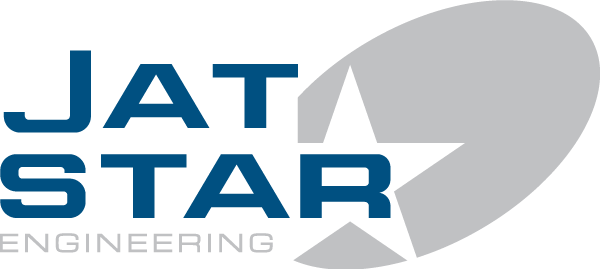
Selecting the ideal centrifugal pump for optimized flow is essential to ensure smooth fluid movement in industrial, commercial, and residential applications.
In fact, the appropriate pump improves energy efficiency, lowers operational costs, and increases equipment longevity.
There are many types, materials, and designs of centrifugal pumps. So, finding the best one for optimal flow can be tricky.
This guide will walk you through the key factors to consider when choosing the right centrifugal pump for optimized flow.
What is a Centrifugal Pump?
Centrifugal pumps are often chosen for fluid transport. They are easy to use, simple to maintain, and work efficiently. They convert mechanical energy into kinetic energy. An impeller helps push the fluid. These pumps are frequently used in water supply systems, industry, irrigation, and HVAC.
Key Factors to Consider When Choosing a Centrifugal Pump
Effective industrial automation relies on precise, reliable, and adaptable drive systems. To address this, SEW-Eurodrive takes on these challenges with innovative drive technology. Thus, it boosts motion control, cuts downtime, and improves energy efficiency.
1. Define Your Application Requirements
Before you choose a centrifugal pump, take a moment to think about your application’s needs, such as:
- The fluid to be pumped (water, chemicals, oil, slurry, etc.)
- Required flow rate (measured in gallons per minute or cubic metres per hour)
- Total head, or pressure required to move the fluid.
- Operating conditions (temperature, viscosity, and chemical compatibility)
Thus, understanding these aspects helps you choose a pump that fits your system’s needs.
2. Flow Rate and Head Requirements
When selecting a centrifugal pump, flow rate and head are essential performance factors. For instance:
Flow Rate
This is the volume of fluid that the pump must move per unit of time. So, to avoid inefficiencies, match the pump’s flow rate to the system’s demand.
Total Dynamic Head (TDH)
The pump needs to deal with total resistance. This includes static head, friction loss, and pressure needs. Thus, using a pump with the right TDH ensures energy efficiency and prevents underperformance.

3. Pump Type and Configuration
Centrifugal pumps are available in a variety of designs to suit different purposes. For instance:
Single-Stage vs. Multi-Stage Pumps
Single-stage pumps work well for low pressure. On the other hand, multi-stage pumps are ideal for high pressure.
Horizontal vs. Vertical Pumps
Horizontal pumps are easier to install and maintain than vertical pumps. They also take up less space and work well in deep-well settings.
Self-Priming vs. Standard Pumps
Self-priming pumps are handy for jobs involving air, like dewatering and sump drainage.
Hence, choosing the right type helps the pump work well in the given conditions.
4. Material Selection
The pump should be made from a material that won’t corrode or wear. It must match the fluid transported. For instance, common materials include:
| Cast Iron | Suitable for water and moderate industrial applications. |
| Stainless Steel | Ideal for corrosive fluids and food-grade applications. |
| Bronze | Used in marine and saltwater applications because it is corrosion resistant. |
| Plastic and Composite Materials | Ideal for chemical processing and harsh fluids. |
Thus, choosing the right material increases the pump’s lifespan and lowers maintenance costs.
5. Efficiency and Energy Consumption
Pumps are a major part of operational costs. This makes energy efficiency an important factor to look at. For instance, look for pumps with:
- High efficiency ratings to reduce energy consumption.
- Variable frequency drives (VFDs) to modify pump speed according to demand.
- Proper impeller design to minimize energy losses.
Hence, choosing an energy-efficient pump reduces electricity costs and has a lesser environmental impact.

6. Pump Seal and Bearing Considerations
Pump seals and bearings are vital. They help keep operations smooth and prevent leaks.
| Mechanical Seals | Ideal for high-pressure and hazardous fluid applications. |
| Gland Packing | Used in low-cost applications that need minimal sealing. |
| Bearing Selection | Proper lubrication and material selection ensure durability and avoid premature failure. |
By doing so, using high-quality seals and bearings increases reliability and decreases downtime.
7. Installation and Maintenance Requirements
When choosing a centrifugal pump, consider how easy it is to install and maintain. For instance:
- Look for pumps with components that are easy to access for quick repairs.
- Select a design that decreases alignment issues and wear and tear.
- Ensure that the pump has a strong support system to withstand vibration and stress.
In the long run, proper installation and frequent maintenance ensure that the pump operates efficiently for years.
Making the Right Choice for Optimized Pump Performance
In short, if you need a pump for industrial, commercial, or residential use, keep these factors in mind. With this in mind, they will help you make choices for smooth and efficient fluid movement.
Find the Right Centrifugal Pump with Jat Star
At Jat Star, we provide high-performance centrifugal pumps, such as the Flowjet Centrifugal Pump, for industrial and commercial needs.
Our team of professionals can help you select the optimal pump for your needs.
So, contact Jat Star today to get the best centrifugal pump for optimized flow!
Next read: Eurodrive: Setting New Standards in Industrial Automation
CONTACT US FOR FREE CONSULTATION!
Get in touch with us now!
Have A Question?




